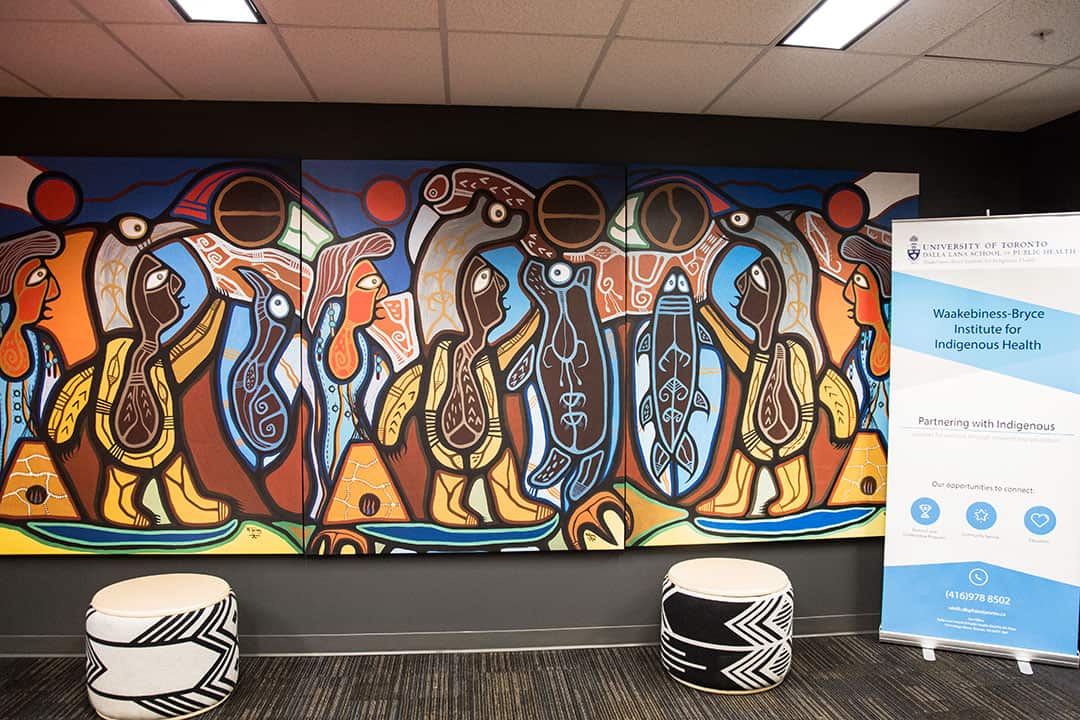This is the inaugural year for the two-year Master of Public Health: Indigenous Health program at the Dalla Lana School of Public Health through the Waakebiness-Bryce Institute for Indigenous Health.
Dr. Suzanne Stewart, Associate Professor at the Ontario Institute for Studies in Education and Director of the Waakebiness-Bryce Institute, designed the program alongside Dr. Angela Mashford-Pringle, Assistant Professor at Dalla Lana and Associate Director of the institute. The program was created with the objective of “[offering] a program based in Indigenous knowledges that’s guided by our traditional knowledge keepers, our elders, our healers, our teachers.”
The involvement of knowledge keepers, she says, reinforces the importance of traditional knowledge, which “is at the core of Indigenous health.”
Stewart explains that increasing the number of researchers and professionals in Indigenous health was one reason for the creation of the program. Another was to increase the number of Indigenous people who can, thanks to programs like these, access education in fields like health care while feeling culturally safe.
“I think the objective of the program, overall, is to create a training program that ensures that everyone who’s a part of that program is a part of the solution,” says Stewart.
The Indigenous population is the fastest growing demographic in Canada. An improvement in this community’s health can lead to higher levels of youth employment and education and increase the overall life expectancy of Canadians, says Stewart.
Due to the poor state of Indigenous health care, Stewart says that “we need to have people who are trained and capable of actually addressing these problems.”
The program includes courses on general public health, quantitative research, and social determinants of health, as well as specific courses such as Indigenous Health, Indigenous Health and Social Policy, and Indigenous Food Systems, Environment & Health.
At the end of their first year, students must complete a practicum over the summer. The practicums are in collaboration with Indigenous communities and all levels of government nationwide, in areas such as policy, program development, and research.
Stewart says the practicum “gives students an opportunity to actually spend time in Indigenous communities, working with Indigenous people, and being able to learn what it’s like to be there and do this work from a cultural perspective.”
Traditional knowledge is localized, explains Stewart, as is healing and its interpretation, which can vary depending on the communities from which elders and teachers originate.
“Indigenous healing and spirituality and pedagogy are not objective,” says Stewart. By learning about traditional Indigenous knowledge, there is a departure from linear thinking. Through this, students learn about the interconnectedness of mental, physical, spiritual, and emotional health.
Stewart notes that the spiritual aspect is important, but usually not incorporated in Western health care programs, including policy.
Stewart hopes that students learn “how to be the person that they’re supposed to be and that they continue to contribute to the solutions and stop being part of the problems.”
Speaking of the first year’s cohort, Stewart says that she is delighted. The students, she explains, are dedicated, open to learning, and committed to the work. Furthermore, she notes that specialized programs are unique because there is something that drives the students to be passionate about the issue.
The existence of this program, and others like it, can aid in the process of decolonization.
Stewart explains that “all healing for us as Indigenous people begins with the spiritual, and all healing is spiritual. And for us to want to heal the system, we need to do that in a basis of traditional knowledge and spirituality, and that’s really what this program is about.”


